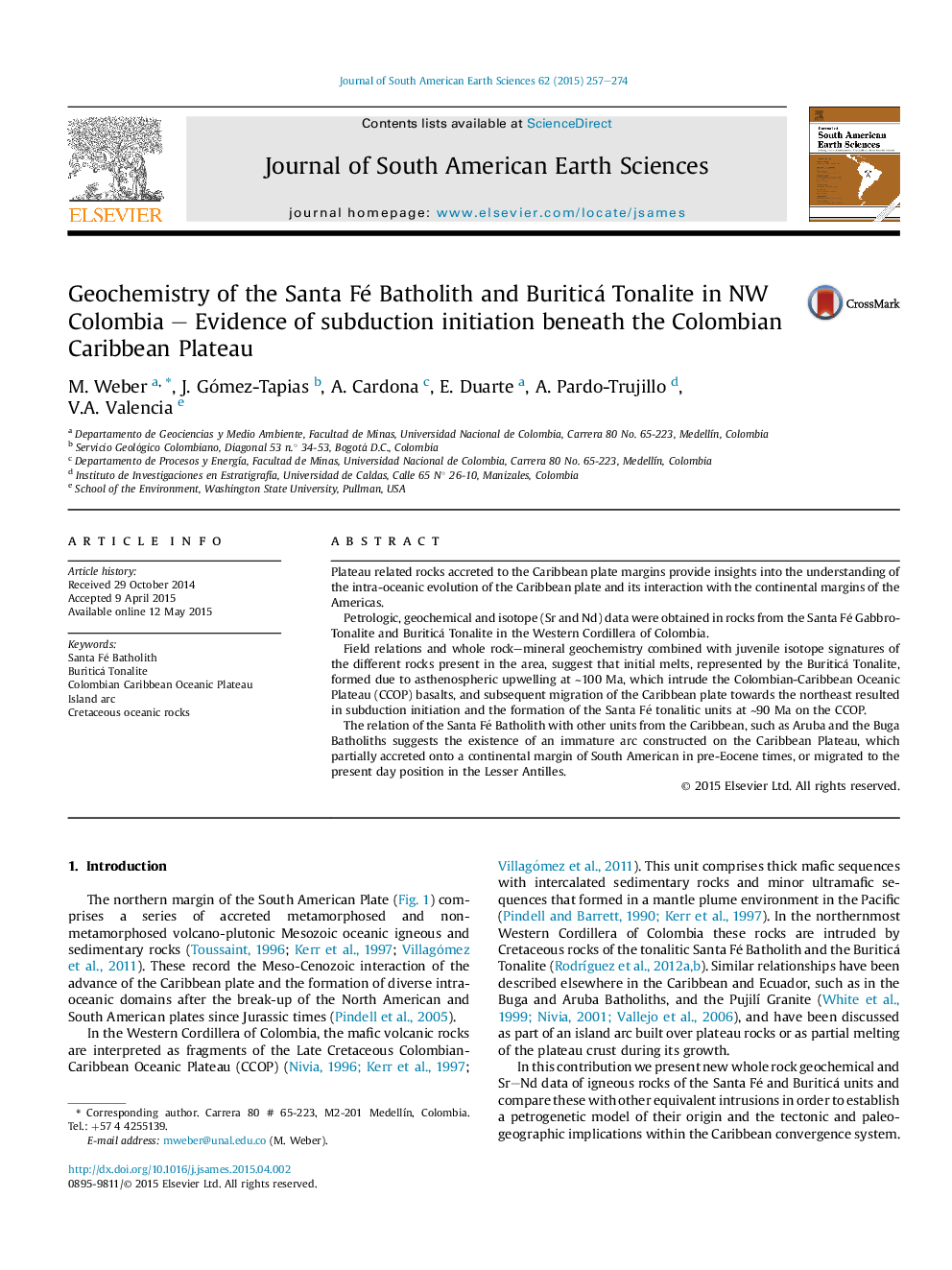| Article ID | Journal | Published Year | Pages | File Type |
|---|---|---|---|---|
| 4682197 | Journal of South American Earth Sciences | 2015 | 18 Pages |
•Two igneous units related to the Colombian Caribbean Plateau were analysed: the Santa Fe Batholith and the Buriticá Tonalite.•The Buriticá Tonalite formed at ∼100 Ma, by shallow crustal level melting of mafic rocks, due to asthenospheric upwelling.•The Santa Fe unit formed at ∼90 Ma, by subduction initiation beneath the Colombian Caribbean Plateau.
Plateau related rocks accreted to the Caribbean plate margins provide insights into the understanding of the intra-oceanic evolution of the Caribbean plate and its interaction with the continental margins of the Americas.Petrologic, geochemical and isotope (Sr and Nd) data were obtained in rocks from the Santa Fé Gabbro-Tonalite and Buriticá Tonalite in the Western Cordillera of Colombia.Field relations and whole rock–mineral geochemistry combined with juvenile isotope signatures of the different rocks present in the area, suggest that initial melts, represented by the Buriticá Tonalite, formed due to asthenospheric upwelling at ∼100 Ma, which intrude the Colombian-Caribbean Oceanic Plateau (CCOP) basalts, and subsequent migration of the Caribbean plate towards the northeast resulted in subduction initiation and the formation of the Santa Fé tonalitic units at ∼90 Ma on the CCOP.The relation of the Santa Fé Batholith with other units from the Caribbean, such as Aruba and the Buga Batholiths suggests the existence of an immature arc constructed on the Caribbean Plateau, which partially accreted onto a continental margin of South American in pre-Eocene times, or migrated to the present day position in the Lesser Antilles.
